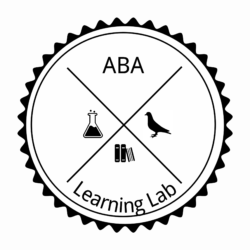Brian Kaminski, RBT, Graduate Student of Behavior Analysis
To a therapist or parent who is brand-new to ABA, a lot of practices and procedures may at first seem unusual – or even counterintuitive.
“Why are there times when we don’t immediately provide attention during a tantrum?”
“Why do we need to take baseline data before we start this new behavior plan?”
“Why does this program need to be run exactly this way?”
Without a proper knowledge of the “Why’s,” the “How To’s” can start to feel a bit arbitrary – even unnecessary.
However, ABA is built upon scientific principles of behavior. Once viewed from the proper behavioral perspective, things start to fall into place – and make a lot more sense.
Let’s look at one such example from my own experience, as well as the “light bulb” moment that followed.
Not stating a child’s name in the SD
“Don’t state the child’s name when you are giving the SD.”
Got it.
This point was hammered home when I first entered the field, however I never stopped and asked why. I assumed that it was “just something we did.”
“Get the child’s attention another way. Then only provide the instruction listed in your program.
Just say, ‘Build this.’
Don’t say, ‘Bridgette, build this.'”
I thought it was pretty strange. Don’t you typically say someone’s name to gain their attention?
At any rate, I didn’t object. I continued providing instructions just like I was told, and eventually forgot about the matter altogether.
A few months later, I joined a new case under a new supervising BCBA.
The time came for my first integrity assessment, and as we were reviewing my results, I saw a section entitled “Child’s name not provided along with the SD.”
“Can I ask a silly question?” I said to my supervisor.
“Why does it matter that I don’t say the child’s name with the SD?”
“Oh, not a silly question at all actually.
We don’t use a child’s name when giving instructions, because if done over and over again during a session, the child starts to ‘pair’ his or her name with work.
For some kids, they may have a really negative history associated with work at first.
They hear their name, and immediately that’s a cue that ‘something bad’ is coming. After a while, they might not respond to their name altogether.
Instead, we should use a child’s name all the time during praise and reinforcement! We want them to respond every time they hear their name, just like you or I would.”
And that’s when the “light bulb” went off.
From that moment on, I made it a habit to ask “Why” routinely. Every time I did, I was met with an answer that expanded my understanding and love of ABA.
Begin to ask yourself – “What are my ‘Why’ questions?”
If you have any, shoot me an email at briankaminski.aba@gmail.com or comment below – I’d love to cover them in future articles.
Your kiddos will benefit from your curiosity!


Thanks, Brian! As practitioners, we need to ask “why” more … and if we are not … we should assess our own behavior in terms of “why” we are not asking “why” more.
My client can repeat what he hears.
He answers the questions related to colors.
He is not responding to what is your name ? question.
What should I do ?